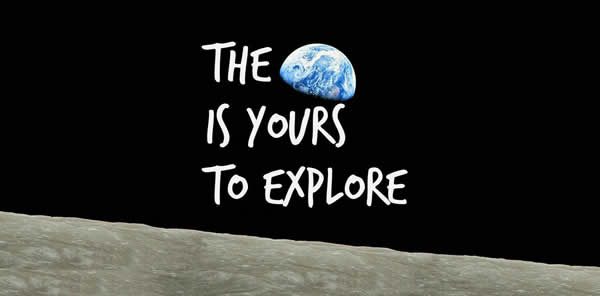HiRISE images
The looming dune

A piece of Mars: this 0.96x0.54 km (0.6x0.33 mi) scene shows a large, rippled dune that is slowly marching towards the upper right. The smooth striped band running from upper left to lower right is the slip face, where sand pushed by the wind eventually avalanches. Smaller scars show where slope failures (little landslides) have formed. (HiRISE ESP_027432_1350, NASA/JPL/Univ. of Arizona) read more ❯
Windblown or not?

A piece of Mars: The surface in this 960x540 m (0.6x0.34 mi) scene has a distinct fabric to it that runs from the upper left to lower right. Are these old lithified dunes? And what makes the tiny filamentary lines that run from upper right to lower left, are those ripples? I'm not convinced either way, but I suspect the wind has had a hand in shaping them, one way or another. (HiRISE ESP_040297_1605, NASA/JPL/Univ. of Arizona) read more ❯
Wind stripes

A piece of Mars: Yes, I post a lot of pictures of martian dunes with striped patterns. They're all distinct and beautiful. So here's another one, 480x270 m (0.3x0.17 mi) in size. These beasts moved from right to left across the scene, some of them leaving behind some stripey deposits in their wake. (HiRISE ESP_039581_1520, NASA/JPL/Univ. of Arizona) read more ❯
Martian lace

A piece of Mars: This 300x300 m (984x984 ft) scene shows bright windblown dunes or ripples arrayed in a lacy pattern (the biggest ones are about 5 m, or 16 ft, across). This is near the landing site of Ares 3, a science fiction book called "The Martian", by Andy Weir that's being made into a movie. I'm betting these beauties won't make an appearance in the movie, though... (HiRISE ESP_040776_2115, NASA/JPL/Univ. of Arizona) read more ❯
Flow

A piece of Mars: Below this ~550 m (0.3 mi) wide crater lies a ~1.3 km (0.8 mi) long "beard", the wake of an ancient flow around the crater. Based on its location on Mars, I'm guessing the fluid flowing was lava. Inside the (interestingly dual) crater are bedforms, the remnants of more recent fluid flow - but in this case, the fluid is air. (HiRISE ESP_039902_1965, NASA/JPL/Univ. of Arizona) read more ❯
Melty dunes

A Piece of Mars: With all due apologies to followers of the show Coupling, I have to call these things "melty dunes". This link shows what a crisp dune should look like. The dunes in this 600x450 m (0.37x0.28 mi) scene, however, have rounded crests and sand that seems to have ponded around the bottom of the dunes. These are common at high southern latitudes on Mars. (HiRISE ESP_039610_1150, NASA/JPL/Univ. of Arizona) read more ❯
<<<<<<<<

A piece of Mars: Ripples form endless chevrons in this 600x450 m (0.37x0.30 mi) scene. It's really the crest of a dune that connects all the vertices in the chevrons, making that straight line that runs nearly vertical through the center. Wind from the south (bottom) is deflected by this crest and other local topography just out of the scene. This pattern has been there for at least 3 Mars years. How long will it last? (HiRISE ESP_013785_1300, NASA/JPL/Univ. of Arizona) read more ❯
The bright barchan

A piece of Mars: Most dunes on Mars are dark, like these and these. So why is this one bright? It's adjacent to a more typical, dark dune. It's possible that there are two populations of sand here that are different enough in size or density, and so they respond to different winds - thus producing remarkably different dunes in the same location. (HiRISE ESP_039568_1120, NASA/JPL/Univ. of Arizona) read more ❯
Sometimes I just have no idea

A piece of Mars: The smooth areas are eroded dunes, separated by fields of boulders (the scene is 1.51x1.14 km or 0.93x0.71 mi). The largest boulder near the center is 7.5 m (25 ft) across, the size of a small RV. The interesting wave patterns on the lower sides of the smooth dunes... well, I don't know. My best guess is it's another type of bedform created from the sand of the smooth dunes. Do you know? (HiRISE ESP_039595_1230, NASA/JPL/Univ. of Arizona) read more ❯
Wind eroded mantle

A piece of Mars: The curving ridge of a mountain has signs of many small landslides. Mantled on top of these is an older set of landslides that has been partially eroded away. The rippled edge of this older deposit suggests that it is wind that has done the erosion. So the history here goes: mountains, then landslides, then wind erosion, then new smaller landslides. (HiRISE ESP_039195_1755 NASA/JPL/Univ. of Arizona) read more ❯